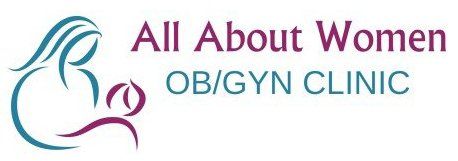Obstetrical Care
Obstetrics Healthcare Specialists
At All About Women OB/GYN, we work with you as a team to advise you through this memorable time. We will provide you with regular and complete care. We are with you from pregnancy confirmation to the birth of your sweet baby, and after that during post-partum. We offer a broad range of obstetrics services. Our services include ultrasound (sonogram), fetal monitoring, and genetic testing. These services are for low and moderate risk pregnancies. We work with maternal-fetal medicine consultants to provide treatment for high-risk pregnancies.
You choose one doctor in our practice as your primary obstetrician, to see monthly. You will meet the other physicians in the group, typically in the last 3 months of pregnancy, when visits are more constant. The obstetrician's team shares on-call coverage. There is always a clinical professional from the practice available 24 hours a day, 7 days a week, for deliveries and emergencies. The doctor who is on-call at the time of your baby’s birth will be the doctor to deliver your baby.
Our Obstetrics services
- Natural Child Birth
- Prenatal Care
- Infertility
- 3D & 4D Ultrasounds
- Postpartum Care
- In-Office Surgery
Compassionate Care For You And Your Baby
Our main goal is a healthy pregnancy for both mother and baby, while doing our best to give you to the experience you want. We give you expert, personalized, and individualized care throughout this natural life process. If there is a need for medical mediation, we keep you informed, listen to your worries, and answer any questions you have. You always make your own decisions, and we support you in your choices. You decide on prenatal testing and treatment as well as for labor and delivery, and whether you desire natural childbirth or an epidural.
Frequently Asked Obstetrics Q & A
During your obstetric appointment, Our Doctors check both you and your baby’s health. The first visit could be the longest it includes:
- Physical and pelvic exam
- Urine test to confirm pregnancy
- Blood work
- Pap smear
- Calculation of your due date
- Discussion of your health and family history
Answers to your questions
Regular follow-up visits track your health and your baby’s health. During each follow-up visit Our doctors will:
- Measures weight gain
- Measures abdominal girth
- Checks blood pressure
- Monitors fetal heart rate
How often do I need to see the doctor during my pregnancy?
To monitor you and your baby’s health, Our Doctors will see you once a month up to week 28 of your pregnancy. Then, you will come into the office twice a month up to week 36. During the last four weeks of your pregnancy, you come in weekly until the baby is born.
What is high-risk pregnancy?
A high-risk pregnancy is a pregnancy where there’s concern about your health or your baby's health. Your pregnancy can become high-risk at the start or later in your pregnancy.
Factors that could indicate high-risk pregnancy include:
- Multiple births
- Mother's age (younger than 18 or older than 35)
- Medical conditions, including diabetes or high blood pressure
- Overweight or obesity
Our doctors are highly knowledgeable obstetricians with many years of experience. They will help you regulate your high-risk pregnancy for a safe delivery for you and your baby.
What is a biophysical profile?
A biophysical profile is a test done at Aster OB/GYN that assesses the health of your baby. It combines an ultrasound with a non-stress examine or fetal heart monitor test.
During this test, Our doctors test your baby’s heart rate, muscle tone, movement, and amniotic fluid to ensure your baby is in great health.
What are my delivery choices?
Our doctors know how important your delivery plan is to you and provide natural delivery at our birthing center.
If necessary, Our doctors can perform a cesarean section. Reasons a woman might need a cesarean section include:
- Placenta previa
- Fibroids
- Multiple Births
- Previous cesarean section
Call All About Women OB/GYN Clinic today at 352-561-3222 to schedule your appointment.
info@allaboutobgyn.com
| 352-561-3222
3306 SW 26TH AVE, SUITE 200, Ocala, FL 34471
Ocala FLORIDA 344471
Email for more information:
Info@PMACare.com
- Mon - Thu
- -
- Friday
- -
- Sat - Sun
- Closed
Saturday Hours are for the 2nd & 4th Saturdays of the month ONLY.
*After 6 pm phone calls are picked by our nursing staff.
Content, including images, displayed on this website is protected by copyright laws. Downloading, republication, retransmission or reproduction of content on this website is strictly prohibited. Terms of Use
| Privacy Policy

